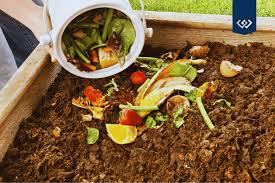With rising concerns about climate change and overflowing landfills, composting at home has become one of the simplest yet most effective ways to live sustainably. It not only reduces household waste but also transforms everyday scraps into nutrient-rich soil that can be used for gardening. Whether you live in a house with a backyard or an apartment with limited space, composting is an eco-friendly practice anyone can start.
What is Composting?
Composting is the natural process of recycling organic matter, such as food scraps and yard waste, into a valuable fertilizer. Microorganisms break down these materials into a dark, crumbly substance called compost, often referred to as “black gold” for plants.
Why Start Composting at Home?
- Reduces Waste: Around 30% of household waste is organic. Composting keeps it out of landfills.
- Cuts Greenhouse Gases: Organic matter in landfills releases methane, a harmful greenhouse gas. Composting prevents this.
- Improves Soil Quality: Compost enriches soil with essential nutrients, enhancing plant growth.
- Saves Money: Reduces the need to buy chemical fertilizers.
Composting Basics: What You Can and Can’t Compost
What to Compost (Greens & Browns):
- Fruit and vegetable scraps
- Coffee grounds and tea bags
- Eggshells
- Grass clippings and leaves
- Shredded newspaper, cardboard, and paper
What Not to Compost:
- Meat, fish, or dairy products (they attract pests)
- Oily or greasy food waste
- Pet waste
- Diseased plants or weeds with seeds
Step-by-Step Guide to Composting at Home
1. Choose a Composting Method
- Backyard Composting: Ideal if you have outdoor space. Use a compost bin or create a pile.
- Vermicomposting: Uses worms (usually red wigglers) to break down food scraps. Perfect for small spaces.
- Bokashi Composting: A fermentation method that works indoors and handles a wider range of food waste.
2. Find the Right Location
For outdoor composting, choose a shady, dry spot with good drainage. For indoor methods, select a ventilated area such as a balcony or under the kitchen sink.
3. Balance Greens and Browns
Composting requires a balance between nitrogen-rich “greens” (like food scraps) and carbon-rich “browns” (like dry leaves or paper). A good rule of thumb is 2 parts browns to 1 part greens.
4. Keep it Moist and Aerated
Your compost pile should be as damp as a wrung-out sponge. Turn it every couple of weeks to add oxygen and speed up decomposition.
5. Wait for the Magic
Depending on the method, compost can take anywhere from 2 to 6 months to be ready. Finished compost will look dark, smell earthy, and crumble easily.
Common Composting Problems and Fixes
- Bad Odor: Too many greens. Add more browns like dry leaves or shredded paper.
- Pile Too Dry: Sprinkle with water.
- Pile Not Decomposing: Turn it more often to add oxygen.
Using Your Compost
Once ready, compost can be used in several ways:
- Mix into garden soil for healthy plant growth.
- Add to potted plants for natural nourishment.
- Use as mulch to retain soil moisture.
Conclusion
Composting at home is a simple, rewarding habit that has a big environmental impact. By turning kitchen and garden waste into valuable compost, you not only reduce landfill contributions but also create a sustainable resource for your plants. Start small, be consistent, and in no time, you’ll be contributing to a greener planet from your own home.
